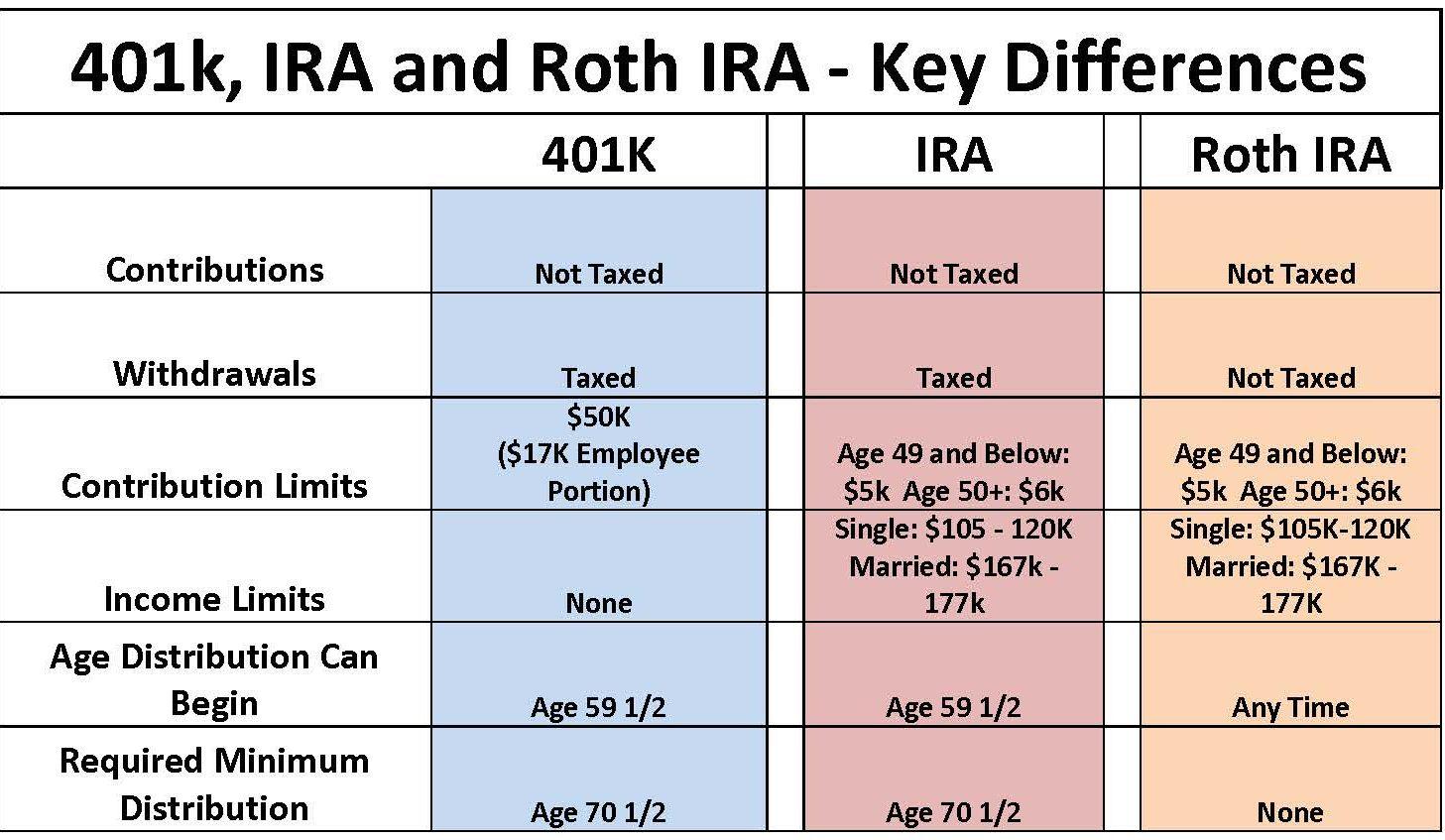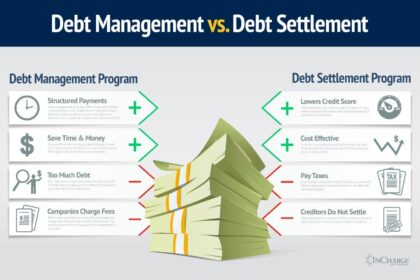In the journey of life, few milestones carry as much weight as retirement. It’s a chapter that promises freedom, leisure, and the chance to indulge in passions long set aside. Yet, behind the allure of tranquil mornings and spontaneous adventures lies a complex web of financial planning, often anchored by the choices we make today. Among the various tools at our disposal, retirement accounts like Individual Retirement Accounts (IRAs) and 401(k) plans stand out as vital instruments that shape our financial futures. These accounts not only offer tax advantages but also pave the way to a secure and fulfilling retirement. In this article, we will explore the intricacies of these accounts, breaking down their features, benefits, and potential pitfalls, empowering you with the knowledge to navigate your retirement journey with confidence. Whether you’re just starting your career or nearing retirement, understanding these essential financial vehicles is key to unlocking a brighter, more secure future.
Budgeting Tips
Managing your finances effectively involves understanding how to maximize your retirement accounts. Whether you’re contributing to an IRA or a 401(k), here are some essential tips to help you optimize your savings:
- Start Early: The power of compound interest means that the earlier you start saving, the more your money can grow over time.
- Contribute Regularly: Set up automatic contributions to your retirement accounts to ensure you’re consistently investing for your future.
- Maximize Employer Match: If your employer offers a matching contribution to your 401(k), be sure to contribute at least enough to take full advantage of this benefit.
In addition, it’s important to periodically assess your investment choices. Diversifying your portfolio can help mitigate risks while maximizing potential returns:
| Investment Type | Risk Level | Potential Returns |
|---|---|---|
| Stocks | High | 8%-10% |
| Bonds | Medium | 4%-6% |
| Cash Equivalents | Low | 1%-2% |
Revisiting your allocations annually and adjusting them based on your changing goals and market conditions can lead to more effective growth of your retirement savings. Adopting these strategies will empower you to build a more secure financial future.
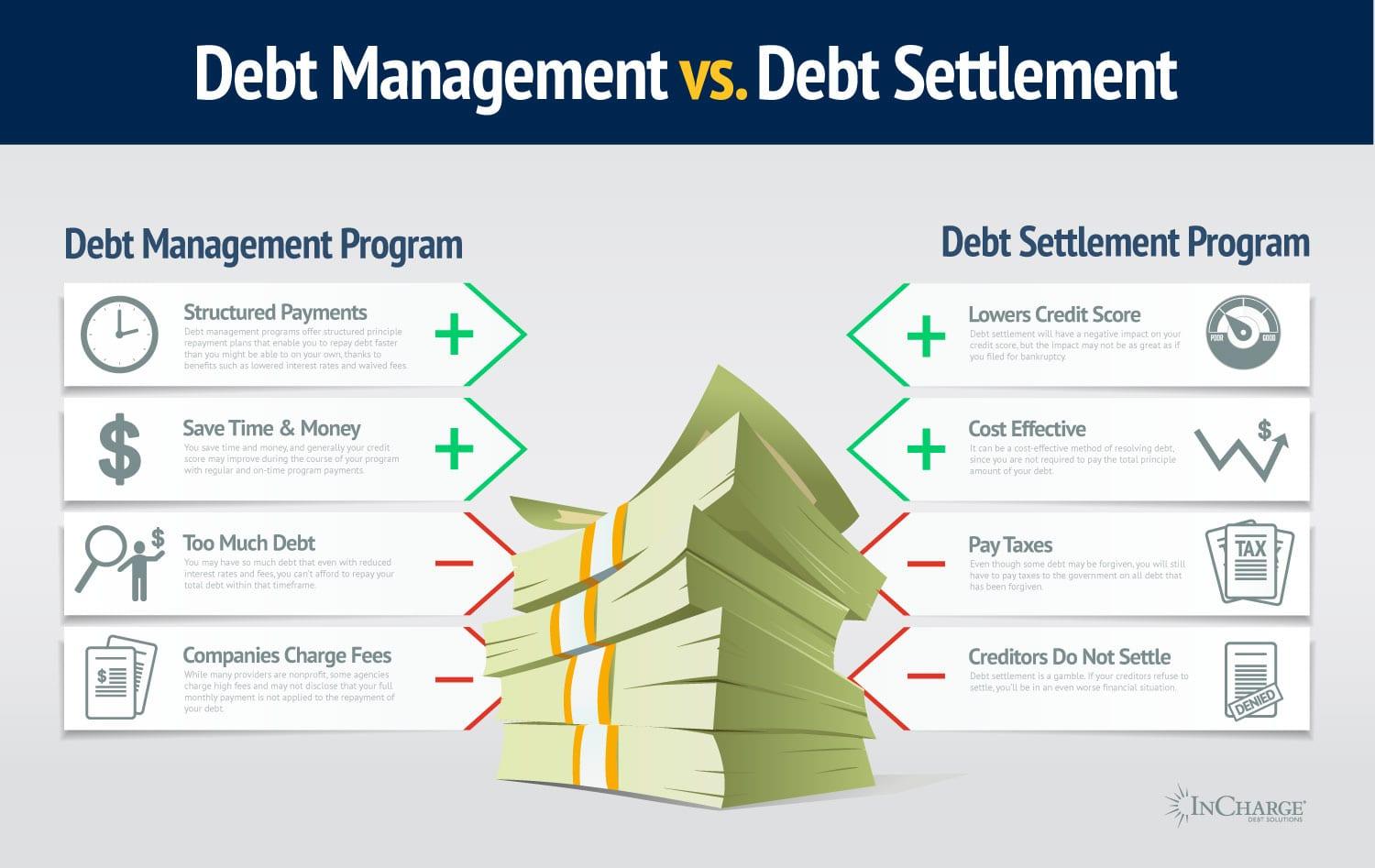
Debt Management
Managing debt effectively is crucial, especially when preparing for your financial future. Retirement accounts such as IRAs and 401k plans can play a significant role in your overall strategy. They not only help you save for retirement but also often provide tax advantages that can free up cash flow. To utilize these accounts effectively, consider the following strategies:
- Prioritize Contributions: Maximize the employer match in your 401k; it’s essentially free money.
- Diversify Investments: Ensure your portfolio aligns with your risk tolerance and financial goals.
- Use Tax Benefits: Take advantage of tax-deferred growth in both IRAs and 401k plans to mitigate debt burdens.
In addition to these strategies, it’s beneficial to regularly review your retirement accounts. This allows you to adjust your contributions based on changes in your debt situation. If you have high-interest debts, focus on paying them down while maintaining minimum contributions to your retirement accounts. The following table outlines a simple plan to balance with retirement savings:
| Debt Type | Action Plan | Retirement Contribution |
|---|---|---|
| High-Interest Credit Cards | Pay more than the minimum | Contribute 5% to 401k |
| Student Loans | Set up auto payments | Contribute 10% to IRA |
| Mortgage | Maintain regular payments | Contribute 15% to 401k |

Saving for Retirement
Planning for retirement is a crucial step in achieving financial independence in your golden years. One of the most effective ways to prepare is by utilizing retirement accounts such as IRAs (Individual Retirement Accounts) and 401(k) plans. These accounts not only provide tax advantages but also help cultivate a disciplined saving habit. Here are a few benefits of these accounts:
- Tax Deferral: Contributions to these accounts often reduce your taxable income in the year they are made.
- Compound Growth: Earnings on investments in these accounts grow tax-free until withdrawal, maximizing potential growth over time.
- Employer Match: Many 401(k) plans offer matching contributions, essentially giving you free money to boost your retirement savings.
When considering which account to prioritize, it may also be beneficial to understand the differences and benefits of traditional vs. Roth accounts. Below is a comparative overview:
| Account Type | Tax Treatment | Withdrawal Rules |
|---|---|---|
| Traditional IRA | Tax-deductible contributions, taxed on withdrawal | Penalty for withdrawal before age 59 ½, RMDs apply |
| Roth IRA | After-tax contributions, withdrawals tax-free | Contributions can be withdrawn anytime, no RMDs |
| 401(k) | Tax-deferred contributions, taxed on withdrawal | Penalty for withdrawal before age 59 ½, RMDs apply |

Emergency Fund Planning
Having a robust emergency fund is crucial for maintaining financial stability, especially as you venture into retirement planning. This fund acts as a financial safety net for unexpected expenses that could otherwise derail your well-laid retirement ideas. It’s recommended to aim for three to six months’ worth of essential living expenses. These funds should be easily accessible, ensuring that whether it’s a medical emergency or urgent home repair, you won’t find yourself dipping into your hard-earned retirement savings.
Incorporating an emergency fund into your overall financial strategy not only safeguards your retirement accounts but also fosters peace of mind. Consider the following guidelines to effectively build and manage your emergency fund:
- Set a Monthly Savings Goal: Determine how much you can allocate each month until you reach your target.
- Choose the Right Account: A high-yield savings account is often the best choice for your emergency fund.
- Regularly Review Your Fund: Adjust your savings target as your living expenses change over time.

Investment Strategies
When considering your financial future, retirement accounts such as IRAs and 401(k)s are two powerful tools that can help you build a nest egg. These accounts offer unique tax advantages that can significantly impact your overall wealth accumulation. For instance, both types allow your investments to grow tax-deferred, meaning you won’t pay taxes on your earnings until withdrawal. Additionally, there are different types of IRAs, including Traditional and Roth, each serving distinct needs depending on your current income and tax situation. Exploring these options can empower you to make informed choices tailored to your long-term goals.
To maximize the benefits of your retirement account, consider the following strategies:
- Diversify Your Portfolio: Spread your investments across various asset classes to reduce risk.
- Contribute Regularly: Make consistent contributions, taking advantage of employer matching in a 401(k), if available.
- Rebalance Annually: Adjust your asset allocation to maintain your desired risk level.
| Account Type | Tax Treatment | Contribution Limits (2023) |
|---|---|---|
| Traditional IRA | Tax-deferred | $6,500 (or $7,500 if over 50) |
| Roth IRA | Tax-free withdrawals | $6,500 (or $7,500 if over 50) |
| 401(k) | Tax-deferred | $22,500 (or $30,000 if over 50) |

Stock Market Investing
When it comes to planning for your future, understanding the different types of retirement accounts can set you on the path to financial security. Both IRAs (Individual Retirement Accounts) and 401(k) plans offer unique benefits, and knowing how to utilize these tools can enhance your investment strategy. A traditional IRA allows individuals to contribute pre-tax income, which can lead to tax-deferred growth until retirement. Meanwhile, with a Roth IRA, contributions are made after taxes, but withdrawals during retirement are tax-free, providing an attractive option for those who expect to be in a higher tax bracket later in life.
Similarly, employer-sponsored 401(k) plans often come with matching contributions, essentially offering free money to employees who participate. Here’s a brief comparison of these accounts:
| Feature | IRA | 401(k) |
|---|---|---|
| Tax Advantage | Tax-deferred / Tax-free (Roth) | Tax-deferred |
| Contribution Limits | $6,500 (Under 50) / $7,500 (50+) | $22,500 (Under 50) / $30,000 (50+) |
| Employer Match | No | Typically yes |
By diversifying your retirement investments across these accounts, you can optimize your tax liabilities and enhance your overall savings potential. Always consider consulting a financial advisor to ensure that your investment strategy aligns with your long-term goals and circumstances.

Real Estate Investment
Investing in real estate can be a powerful strategy for bolstering your retirement portfolio. Utilizing retirement accounts like IRAs and 401(k)s to fund s allows you to leverage tax advantages while diversifying your assets. Self-Directed IRAs provide a pathway for investors who want to purchase real estate within their retirement accounts. This strategy not only helps in building wealth for retirement but also shields gains from immediate taxation, enhancing your long-term investment potential.
However, it’s essential to understand the rules governing these accounts to avoid penalties and maximize benefits. Here are some critical considerations:
- Prohibited Transactions: Be aware of what types of transactions are disallowed, including buying property for personal use.
- Financing Limits: Understand how debt can be utilized within these accounts, especially with non-recourse loans.
- Asset Diversification: Strive to balance s with other assets to minimize risk.
| Account Type | Investment Options | Tax Advantages |
|---|---|---|
| IRA | Residential & Commercial Real Estate | Tax-deferred growth |
| 401(k) | Trusts (REITs) | Employer matching contributions |

Credit Score Improvement
Improving your credit score is essential when planning for a secure financial future, especially if you’re considering utilizing retirement accounts like IRAs and 401(k)s. A higher credit score can lead to better interest rates and loan terms, which can be beneficial if you plan to make withdrawals or take out loans against your retirement accounts in the future. Here are some strategies to consider:
- Pay Your Bills on Time: Timely payments are critical; consider setting up autopay to avoid missing deadlines.
- Limit Credit Inquiries: Frequent inquiries can lower your score; only apply when necessary.
- Reduce Debt Utilization: Aim to keep your credit utilization below 30% of your total available credit.
Additionally, knowing how your retirement savings strategy interacts with your credit profile can enhance your financial management. For instance, if you need to tap into your 401(k) or IRA due to an emergency, having a good credit score can provide more options without incurring high-interest debt. Consider examining your retirement accounts through a lens of sustainability; compare them with other financial obligations to ensure a balanced approach:
| Retirement Account | Potential Impact on Credit |
|---|---|
| 401(k) | Typically does not affect credit unless you take loans against it. |
| IRA | Withdrawals may have tax implications, affecting financial planning. |

Financial Independence
Achieving often hinges on maximizing your retirement accounts, such as Individual Retirement Accounts (IRAs) and 401(k) plans. These powerful tools not only offer tax advantages but also set a solid foundation for a secure financial future. Here are key points to consider regarding both options:
- IRA: With tax-deductible contributions and tax-deferred growth, IRAs can be a lucrative avenue for saving. You can choose between Traditional and Roth IRAs, each with distinct tax implications.
- 401(k): Often employer-sponsored, 401(k) plans come with potential employer matching, allowing for accelerated growth of your investment. They also have higher contribution limits compared to IRAs.
To better understand how these retirement accounts can impact your journey towards , consider the following comparison:
| Feature | IRA | 401(k) |
|---|---|---|
| Contribution Limit (2023) | $6,500 (or $7,500 if age 50+) | $22,500 (or $30,000 if age 50+) |
| Tax Benefits | Tax-deferred growth, potential deductions | Pre-tax contributions or Roth option |
| Employer Match | No | Yes, often up to a certain percentage |

Passive Income Streams
Exploring retirement accounts such as IRAs (Individual Retirement Accounts) and 401(k)s not only offers the potential for substantial growth of your investments over time but also contributes to financial independence during your retirement years. These accounts allow individuals to set aside pre-tax or post-tax dollars, depending on the type of account, which can significantly enhance your ability to achieve compounded growth. The benefits of utilizing these vehicles include:
- Tax Advantages: Contributions may reduce your taxable income, and growth within the account is tax-deferred.
- Diversified Investment Options: Both accounts typically allow for a range of investments, including stocks, bonds, and mutual funds.
- Employer Matches: With a 401(k), many employers offer matching contributions, effectively giving you free money towards your retirement.
To illustrate the value of these accounts, consider the following table, which outlines the potential growth of a 401(k) with various contributions over a 30-year period:
| Annual Contribution | Total Savings (after 30 years) | Assumed Annual Return (7%) |
|---|---|---|
| $5,000 | $467,990 | 7% |
| $10,000 | $935,979 | 7% |
| $15,000 | $1,403,969 | 7% |
By understanding how these pension-building tools work and engaging with them wisely, you can effectively create that significantly enhance your quality of life in retirement. Consider the long-term benefits, and get started on the journey to a financially secure future.

Tax Planning
When considering your future, incorporating retirement accounts into your financial strategy is essential for effective . Both IRAs (Individual Retirement Accounts) and 401(k)s provide unique tax advantages that can significantly affect your long-term savings. For example, contributions to a traditional IRA or a 401(k) can lower your taxable income in the year they are made, allowing you to potentially fall into a lower tax bracket. With a Roth IRA, while you contribute post-tax dollars, your withdrawals in retirement are tax-free, making it a robust option for those expecting to be in a higher tax bracket in the future.
Understanding the differences and benefits of these accounts is key to maximizing your tax efficiency. Here are some vital points to consider:
- Contribution Limits: Each account has specific limits for contributions, which can change annually.
- Withdrawal Rules: Know when and how you can access your funds without penalties.
- Employer Match: If your employer offers a match for 401(k) contributions, take full advantage of this free money!
| Account Type | Tax Treatment | Contribution Limit (2023) |
|---|---|---|
| Traditional IRA | Tax-deductible contributions | $6,500 ($7,500 if age 50+) |
| Roth IRA | Tax-free withdrawals | $6,500 ($7,500 if age 50+) |
| 401(k) | Tax-deductible contributions | $22,500 ($30,000 if age 50+) |

Retirement Accounts (IRA, 401k)
Retirement accounts serve as essential tools for building a secure financial future. Among the most popular options are Individual Retirement Accounts (IRAs) and 401(k)s, each offering unique benefits tailored to different financial circumstances. While IRAs can be opened by anyone with earned income, 401(k) plans are typically offered through employers, which can come with additional perks like matching contributions. Understanding the features of these accounts can empower you to make informed decisions about your retirement savings. Here are some key characteristics:
- Tax Advantages: IRAs offer tax-deferred growth, whereas 401(k) contributions are often made pre-tax.
- Contribution Limits: As of 2023, individuals can contribute up to $6,500 to an IRA, while 401(k) contributions can reach up to $22,500.
- Withdrawal Rules: Penalties may apply for early withdrawals from both accounts, but rules differ regarding eligible distributions.
When evaluating which account suits your retirement strategy, it’s crucial to consider both immediate tax implications and your long-term financial goals. A common approach is to maximize employer-matched contributions in a 401(k) while also contributing to an IRA to benefit from the specific investment choices that IRAs allow. Below is a simple comparison of these retirement accounts to help you visualize their differences:
| Feature | IRA | 401(k) |
|---|---|---|
| Maximum Contribution | $6,500 | $22,500 |
| Tax Treatment | Tax-deferred or tax-free (Roth option) | Pre-tax, possibly Roth |
| Employer Match | No | Possible |
| Investment Options | Generally wider range | Limited to plan offerings |

Financial Planning for Families
Effective involves understanding various retirement accounts, such as IRAs and 401(k)s. Each of these accounts serves as a tool to help you save for retirement but operates differently. A 401(k) is typically employer-sponsored, allowing you to contribute a percentage of your salary before taxes are taken out. This can often come with matching contributions from your employer, amplifying your savings potential. On the other hand, an IRA, or Individual Retirement Account, offers more flexibility as you can open it through banks, credit unions, or brokerage firms, and choose your investments. There are two primary types: the Traditional IRA, with tax-deductible contributions, and the Roth IRA, which allows tax-free withdrawals in retirement.
When considering which account to prioritize, keep the following points in mind:
- Employer Contributions: Take advantage of any matching funds in a 401(k) scheme.
- Investment Choices: IRAs generally offer a wider array of investment options compared to 401(k) plans.
- Withdrawal Flexibility: Roth IRAs allow for tax-free and penalty-free withdrawals on contributions, which can be beneficial in emergencies.
| Account Type | Key Features | Best For |
|---|---|---|
| 401(k) | Employer-sponsored, tax-deferred, potential employer matching | Employees looking to save with employer incentives |
| Traditional IRA | Tax-deductible contributions, penalties for early withdrawal | Individuals seeking tax deductions |
| Roth IRA | Tax-free withdrawals in retirement, no age limit to contribute | Individuals expecting to be in a higher tax bracket in retirement |

Personal Finance Apps
In today’s digital age, managing your retirement accounts effectively can be greatly enhanced by utilizing . These tools offer various features to help you track contributions to your IRA and 401(k), monitor investment performance, and project future retirement funds. Some of the key benefits of using these apps include:
- Real-time Tracking: Monitor your account balances and investment growth at any time.
- Budgeting Tools: Create customized budgets that incorporate your retirement goals.
- Goal Setting: Set personal retirement milestones and track your progress toward achieving them.
Additionally, many finance apps provide educational resources to help you understand the intricacies of retirement accounts. They often include features like comparison charts and calculators to assist in making informed decisions. Here’s a brief overview of how some popular apps differentiate themselves:
| App Name | Main Features | Cost |
|---|---|---|
| Mint | Budgeting, Investment Tracking | Free |
| Personal Capital | Portfolio Analysis, Retirement Planning | Free with premium options |
| YNAB | Bespoke Budgeting | $11.99/month |
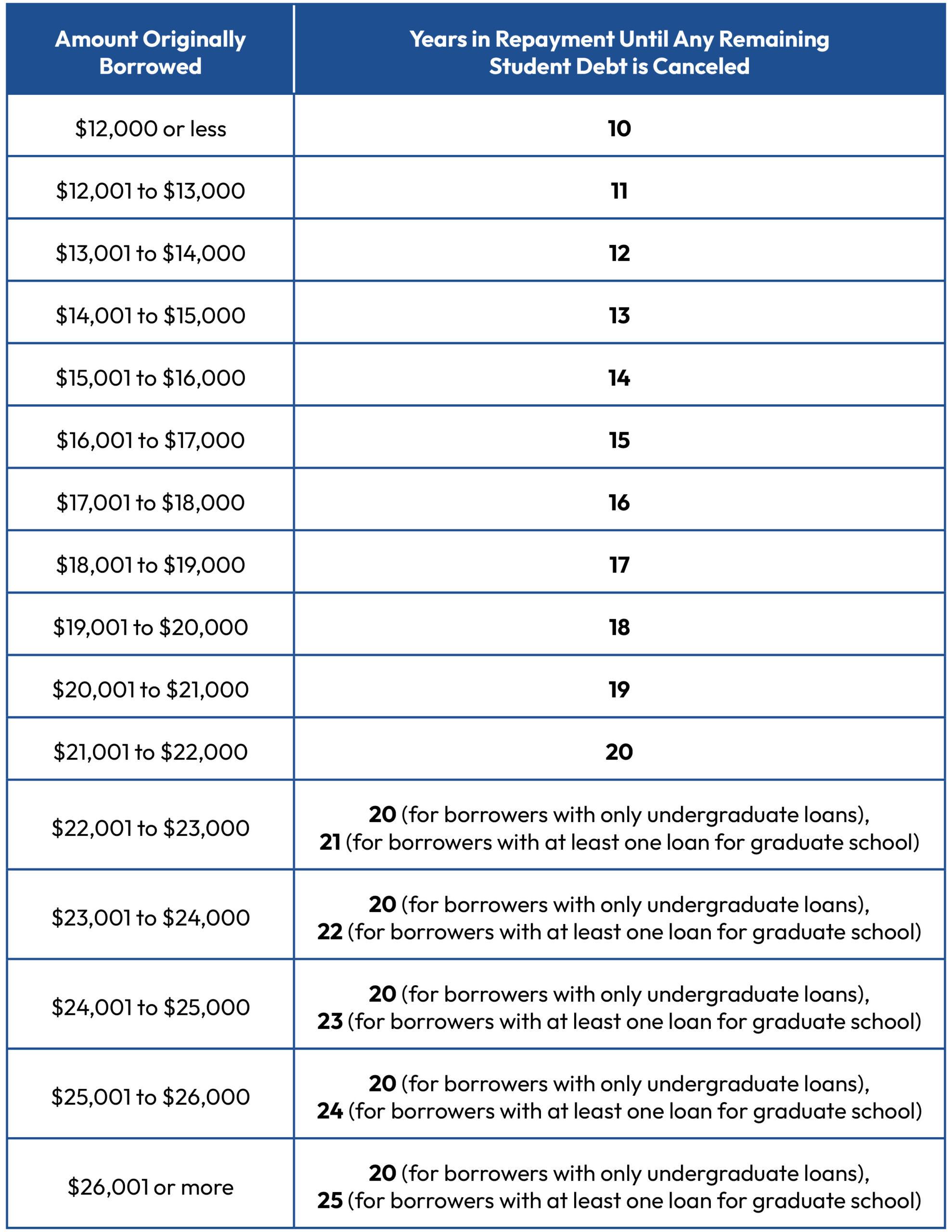
Student Loan Repayment
Balancing and saving for retirement can feel like a daunting task, but it’s essential to create a strategy that works for you. Consider implementing the 50/30/20 rule, which allocates your income in the following manner: 50% for needs, 30% for wants, and 20% for savings and debt repayment. This budget can help you prioritize your financial goals while managing your education debt:
- Focus on Federal Loans: If you have federal student loans, explore income-driven repayment plans that can reduce your monthly payments based on your earnings.
- Consolidation and Refinancing: Look into consolidating or refinancing your loans to secure a lower interest rate, potentially easing your financial burden.
- Employer Assistance: Some companies offer assistance as part of their employee benefits. Be sure to check if this applies to you.
Utilizing your resources wisely can allow you to allocate funds towards both areas effectively. Consider the benefits of contributing even a small amount to an IRA or 401k while paying off your loans. As you make payments, aim to:
| Strategy | Benefits |
|---|---|
| Automate Savings | Simplifies the process and ensures consistent contributions. |
| Employer Match | Maximizes your investment potential if participating in a 401k. |
| Save Windfalls | Encourages putting tax returns or bonuses directly into retirement accounts. |

Debt-Free Journey
When embarking on a , it’s critical to consider how retirement accounts like IRAs and 401(k)s can fit into your overall financial strategy. While eliminating debt might be your immediate goal, don’t overlook the importance of saving for retirement. Contributing to these accounts not only helps you build a nest egg for the future but also offers tax advantages that can enhance your savings. Here’s why investing in these accounts is essential:
- Tax Benefits: Contributions to traditional IRAs and 401(k)s are often tax-deductible, reducing your taxable income.
- Compounding Interest: The earlier you start contributing, the more you benefit from compound growth, amplifying your savings over time.
- Employer Matches: With 401(k) plans, many employers offer matching contributions, essentially giving you free money towards retirement.
Balancing debt repayment with retirement savings can feel daunting, but a strategic approach can make it manageable. Prioritize high-interest debts first while contributing enough to your retirement accounts to take advantage of employer matches. This method allows you to reduce liabilities while simultaneously building your future. Consider the following simple breakdown of recommended contributions based on your financial situation:
| Income Level | Debt Payment (% of income) | Retirement Savings (% of income) |
|---|---|---|
| Under $50,000 | 15% | 5% |
| $50,000 – $100,000 | 10% | 10% |
| Over $100,000 | 5% | 15% |

Credit Card Management
Effective financial planning involves not just saving for retirement through accounts like IRAs and 401(k)s, but also maintaining a healthy credit profile that can support your goals. A well-managed credit card can serve as a tool for building credit, offering benefits such as cash back, rewards, and security against fraud. By utilizing your credit card wisely, you can keep a low utilization rate, ensure timely payments, and even automate your contributions to retirement accounts, all while enjoying the perks of credit rewards.
To enhance your financial health while managing your credit cards, consider developing a strategic plan that includes:
- Budgeting: Align your credit card spending with your monthly budget.
- Tracking Rewards: Regularly check your rewards to maximize benefits.
- Automating Payments: Set up auto-pay to avoid late fees and maintain a good credit score.
- Regular Review: Periodically assess your credit card statements for accuracy and potential savings.
| Credit Card Type | Best For |
|---|---|
| Cash Back | Everyday Purchases |
| Travel Rewards | Frequent Travelers |
| Low Interest | Paying Off Debt |
| Student Cards | Building Credit for Students |
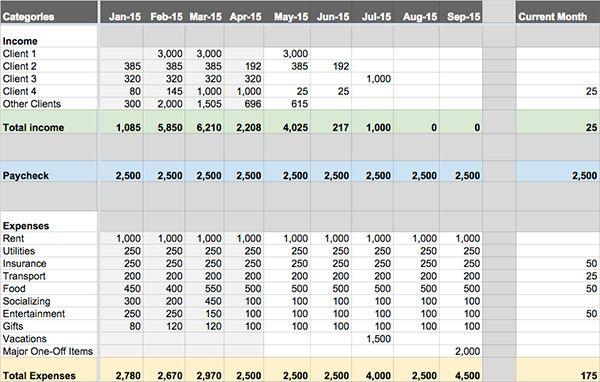
Budgeting for Freelancers
As a freelancer, understanding how to effectively budget for retirement accounts is crucial. Setting aside funds for your future can help ensure financial stability as you transition away from the hustle of gig work. One popular option is the Individual Retirement Account (IRA). An IRA can offer significant tax advantages, allowing your savings to grow tax-deferred until withdrawal, maximizing your investment potential. Additionally, you might consider a Solo 401(k), designed specifically for self-employed individuals. This plan allows you to contribute both as an employee and employer, potentially increasing your contribution limits beyond those of a traditional IRA.
When choosing between these options, consider the following factors:
- Contribution Limits: Understand the maximum contributions allowed annually.
- Tax Benefits: Evaluate whether you prefer pre-tax or post-tax contributions to match your current financial situation.
- Investment Choices: Check the range of investment options available within each account type.
| Retirement Option | 2023 Contribution Limit | Tax Status |
|---|---|---|
| Traditional IRA | $6,500 ($7,500 if 50+) | Tax-deferred |
| Roth IRA | $6,500 ($7,500 if 50+) | Tax-free withdrawal |
| Solo 401(k) | $66,000 ($73,500 if 50+) | Tax-deferred |

Frugal Living Tips
When considering frugal living strategies, focusing on your retirement accounts can make a significant difference in your long-term savings. Individual Retirement Accounts (IRAs) and 401(k) plans are excellent tools not just for accumulating wealth, but for ensuring your future financial stability without breaking the bank today. By taking advantage of tax benefits and employer matching contributions, you can maximize your savings. It’s important to regularly review your contributions and take full advantage of what is offered to you—your future self will thank you.
To make the most of your retirement savings while keeping your spending in check, consider the following tips:
- Automate Contributions: Set up automatic deposits to your retirement accounts to ensure consistent saving.
- Explore Tax Benefits: Understand the tax implications of your accounts to optimize your savings strategy.
- Invest Wisely: Choose low-cost index funds or ETFs for your accounts to minimize fees and maximize returns.
| Type of Account | Contribution Limits | Tax Benefits |
|---|---|---|
| IRA | $6,500 (under 50) | Tax-deferred growth |
| 401(k) | $22,500 (under 50) | Tax-deferred growth + employer match |

Side Hustles for Extra Income
For those looking to fortify their finances beyond traditional employment, leveraging retirement accounts can be a savvy approach to building extra income. Consider establishing a Roth IRA, which allows you to contribute after-tax dollars, offering tax-free withdrawals during retirement. This can be particularly beneficial if you expect to be in a higher tax bracket down the line. Additionally, many employers offer 401(k) plans that often include matching contributions—an instant return on your investment. This strategy can not only supplement your retirement but also serve as a nest egg for unexpected expenses along the way.
Here are some effective ways to maximize your retirement accounts for extra income:
- Automate Contributions: Set up automatic transfers from your checking to your retirement accounts to ensure consistent savings without the risk of forgetting.
- Diversify Investments: Choose a mix of stocks, bonds, and mutual funds to balance risk and reward.
- Explore Side Business Options: Utilize funds from a side hustle to make additional contributions, increasing your potential growth.
| Account Type | Benefits |
|---|---|
| Roth IRA | Tax-free withdrawals; flexible contributions |
| 401(k) | Employer matching; potential high contribution limits |

Financial Literacy Education
Understanding retirement accounts is crucial for anyone looking to secure their financial future. Two of the most popular options are Individual Retirement Accounts (IRAs) and 401(k) plans. While both serve the primary purpose of preparing you for retirement, they come with distinct features and benefits. An IRA allows you to contribute a fixed amount of your income each year, often providing tax advantages. On the other hand, a 401(k) is typically employer-sponsored, allowing employees to save directly from their paychecks, sometimes with matching contributions from employers. This can amplify your savings over time significantly.
When deciding between these retirement options, consider factors such as contribution limits, tax implications, and investment choices. Here’s a quick comparison to help you grasp their differences:
| Feature | IRA | 401(k) |
|---|---|---|
| Contribution Limit (2023) | $6,500 ($7,500 if 50+) | $22,500 ($30,000 if 50+) |
| Employer Match | No | Possible |
| Withdrawal Flexibility | More options | Limited options |
Choosing the right path for your retirement savings can have a profound impact on your financial well-being. It is essential to evaluate your individual circumstances, consult with a financial advisor if needed, and take proactive steps to ensure you are maximizing your contributions. Start planning your retirement today to secure a future of financial stability.

Insurance Planning
Effective complements your retirement strategy by ensuring that unforeseen events do not derail your financial goals. When considering Retirement Accounts such as IRAs and 401(k)s, it is essential to understand how they interact with various insurance products. By integrating life insurance and long-term care insurance, you can create a safety net that not only protects your assets but also offers peace of mind as you approach retirement. This proactive approach allows you to safeguard your retirement savings, ensuring they remain intact for future needs.
When selecting insurance options, consider the following key elements:
- Life Insurance: Acts as a protective layer for your beneficiaries, ensuring they remain financially secure in case of your untimely death.
- Disability Insurance: Provides income replacement during periods of incapacitation, preserving your ability to contribute to your retirement accounts.
- Long-Term Care Insurance: Protects against the high costs of care in your later years, allowing you to preserve your retirement savings.
| Insurance Type | Retirement Impact |
|---|---|
| Life Insurance | Protects estate and beneficiaries |
| Disability Insurance | Secures income while saving |
| Long-Term Care Insurance | Preserves retirement savings |

Long-Term Wealth Building
Building wealth for the long term is often seen as a marathon rather than a sprint, and utilizing retirement accounts like IRAs and 401(k)s can be a significant part of this journey. By contributing to these accounts, you can take advantage of tax benefits that can amplify your savings over time. The magic of compound interest plays a crucial role; as your investments grow, the gains themselves begin to earn interest, leading to exponential growth. Each contribution not only adds to your balance but also opens the door to potential employer match programs in 401(k) accounts, which provide free money to bolster your retirement fund.
When considering how best to leverage these accounts, it’s beneficial to understand the types available and their individual advantages. For instance, Traditional IRAs offer tax-deductible contributions, while Roth IRAs provide tax-free withdrawals in retirement. On the other hand, 401(k) plans often come with higher contribution limits and employer matching. Here’s a brief overview of these options:
| Account Type | Tax Treatment | Contribution Limit (2023) | Employer Match |
|---|---|---|---|
| Traditional IRA | Tax-deductible contributions | $6,500 (under 50) | No |
| Roth IRA | Tax-free withdrawals | $6,500 (under 50) | No |
| 401(k) | Tax-deferred growth | $22,500 (under 50) | Yes |
Choosing the right account depends on your individual financial goals, timeline, and current income level. By strategically utilizing these retirement vehicles, you can set yourself up for a future where financial freedom is not just a dream but a tangible reality. Remember, starting early and contributing regularly can significantly enhance your ability to build lasting wealth.

Saving for College
When it comes to planning for higher education, utilizing a variety of savings strategies is key. While many think of traditional savings accounts or 529 plans, retirement accounts like IRAs and 401(k)s can also play a crucial role. Although these accounts are primarily meant for retirement, they can serve as supplementary funds for college expenses under certain conditions. For instance, you can withdraw contributions from a Roth IRA without penalties, making it a flexible option. However, it’s essential to understand the impact on your long-term retirement goals, ensuring you balance saving for your child’s education while still preparing for your own future.
Here are some important points to consider when using retirement accounts for college savings:
- Tax Advantages: Contributions to traditional IRAs may reduce taxable income, while withdrawals from Roth IRAs can be tax-free under certain conditions.
- Withdrawal Rules: It’s crucial to be aware of the rules governing withdrawals—early distributions may incur taxes and penalties.
- Investment Growth: Funds in these accounts have the potential to grow through investment, potentially increasing the amount available for college.
| Account Type | Withdrawal Penalty | Tax Implications |
|---|---|---|
| Traditional IRA | 10% penalty if under 59½ | Taxable withdrawals |
| Roth IRA | No penalty on contributions | Tax-free withdrawals on contributions |
| 401(k) | 10% penalty if under 59½ | Taxable withdrawals |

Estate Planning
When it comes to retirement accounts, understanding the nuances of IRAs and 401(k)s is crucial for anyone looking to secure their financial future. Both options serve as powerful tools in building wealth for retirement but come with differing rules and benefits. IRAs, or Individual Retirement Accounts, offer individuals the flexibility to select their own investments and can be further categorized into traditional and Roth IRAs. On the other hand, 401(k) plans are employer-sponsored retirement savings plans, allowing employees to save a portion of their paycheck before taxes are taken out. Let’s explore a few key elements that differentiate these accounts:
| Feature | IRA | 401(k) |
|---|---|---|
| Contribution Limits | 2023: $6,500 (under 50) | 2023: $22,500 (under 50) |
| Employer Match | No | Possible |
| Tax Benefits | Tax-deferred (traditional) or tax-free (Roth) | Tax-deferred |
When planning your estate, it’s essential to account for how these retirement accounts will fit into your overall financial strategy. Beneficiary designations play a critical role; ensuring that your retirement accounts are properly set up to be passed on can save your heirs considerable stress and potential tax implications. Additionally, the tax implications of withdrawing funds from these accounts post-retirement should be evaluated. Understanding the rules of Required Minimum Distributions (RMDs) for traditional IRAs and 401(k)s can help prevent penalties and ensure you’re making the most of your retirement savings when it comes time to access those funds. Navigating these intricacies can substantially impact your financial legacy and overall goals.

Financial Goals Setting
Setting effective financial goals is crucial for ensuring a comfortable retirement, especially when considering options like IRAs (Individual Retirement Accounts) and 401(k) plans. Understanding the distinctions and advantages of each account type can significantly impact your savings trajectory. Here are some key points to contemplate:
- Tax Advantages: Contributions to a traditional IRA or 401(k) are often tax-deductible, thereby lowering your taxable income and potentially putting you in a lower tax bracket.
- Contribution Limits: Be aware of the annual contribution limits for both accounts, as excess contributions can incur penalties.
- Employer Matching: Take advantage of employer-sponsored 401(k) matching programs, which is essentially free money for your retirement savings.
To further illustrate the comparison between these two retirement options, consider the following:
| Feature | IRA | 401(k) |
|---|---|---|
| Ownership | Individual | Employer Sponsored |
| Investment Options | Wide Variety | Limited to Plan Choices |
| Loan Options | No | Yes, under certain conditions |
Establishing financial goals involves evaluating your current lifestyle, future aspirations, and the necessary steps to bridge the gap between the two. Identifying your target retirement age and required lifestyle expenses can streamline your savings strategy. As you embark on this financial journey, remember to regularly review and adjust your goals to ensure alignment with any life changes.

Money Management for Couples
When managing finances as a couple, understanding each type of retirement account is crucial for building a solid future together. Individual Retirement Accounts (IRA) and 401(k)s offer distinct benefits that can complement your overall retirement strategy. An IRA is a tax-advantaged savings account that allows individuals to save for retirement with contributions that can be tax-deductible, depending on income and other factors. On the other hand, a 401(k) is a workplace retirement savings plan that often comes with the additional benefit of employer matching contributions, making it an attractive option for couples looking to maximize their savings. Consider combining your IRA contributions and 401(k) investments to create a balanced approach, maximizing your financial growth while preparing for retirement.
To streamline your joint retirement planning, it’s important to be aware of contribution limits and withdrawal rules. Here’s a simple overview of the key features:
| Account Type | Contribution Limit (2023) | Employer Match | Withdrawal Rules |
|---|---|---|---|
| IRA | $6,500 (or $7,500 if age 50+) | No | Penalties for early withdrawal before age 59½ |
| 401(k) | $22,500 (or $30,000 if age 50+) | Yes (up to company policy) | Penalties for early withdrawal before age 59½ |
By staying informed and proactive about your retirement accounts, couples can ensure they’re on the right path. Discussing your short- and long-term financial goals regularly and understanding how much to allocate into each account can lead to successful retirement planning. Remember, it’s not just about saving, but also about making informed choices that reflect both partners’ desires for the future—aligning your financial dreams along the way.

Family Budgeting
Understanding retirement accounts, such as IRA and 401(k) plans, is an essential component of effective . These accounts not only help in building a secure financial future but also offer significant tax advantages that can alleviate some of the financial strain families face. For instance, contributions to a traditional IRA may be tax-deductible, whereas Roth IRA provides tax-free withdrawals during retirement. Leveraging these options wisely can contribute immensely to long-term savings:
- IRA: An individual retirement account that allows you to save for retirement with tax advantages.
- 401(k): A company-sponsored retirement plan that allows employees to save a portion of their paycheck before taxes are taken out.
- Employer Match: Many employers offer to match contributions to your 401(k), effectively giving you “free money” towards your retirement.
- Investment Choices: Both accounts offer a range of investment options, from stocks to bonds, which can grow your savings over time.
| Account Type | Contribution Limits (2023) | Tax Status |
|---|---|---|
| Traditional IRA | $6,500 ($7,500 if age 50+) | Tax-deductible contributions |
| Roth IRA | $6,500 ($7,500 if age 50+) | Tax-free withdrawals |
| 401(k) | $22,500 ($30,000 if age 50+) | Tax-deferred growth |
To maximize benefits, families should prioritize contributions to these retirement accounts as part of their overall financial plan. For instance, it’s often recommended to consider contributing enough to get the full employer match, which can significantly enhance retirement savings and reduce future burdens. Implementing a strategic approach to these retirement accounts can create a solid foundation for a financially secure future while effectively balancing today’s household budget.

Smart Spending Habits
When planning for retirement, understanding the nuances of your retirement accounts can lead to significant benefits. Opting for an Individual Retirement Account (IRA) or a 401(k) plan can dramatically influence your financial future. Here are some smart strategies for using these accounts effectively:
- Start Early: The sooner you contribute, the more your money can grow through compound interest.
- Maximize Contributions: Aim to contribute the maximum allowed each year to take full advantage of tax benefits.
- Employer Match: If your employer offers a matching contribution for your 401(k), ensure you’re contributing enough to get the full match—as this is essentially free money.
It’s also vital to keep an eye on how your investments are allocated within these accounts. Many individuals overlook the potential of diversifying their portfolios. For instance, consider the following distribution strategies for an IRA or 401(k):
| Asset Class | Percentage Allocation |
|---|---|
| Stocks | 60% |
| Bonds | 30% |
| Cash Equivalents | 10% |
By reviewing and adjusting your asset allocation as you age, you can balance risk with growth potential to suit your evolving needs. Adopting these habits will ensure you’re not just saving for retirement but doing so in a strategic manner that maximizes your future financial security.

Personal Finance for Millennials
When it comes to planning for the future, understanding retirement accounts is crucial for securing financial stability. Two of the most popular options available are IRAs (Individual Retirement Accounts) and 401(k) plans. Each of these accounts serves a unique purpose and offers distinct advantages, making them worthy of consideration. An IRA is often opened by individuals and allows for contributions up to the annual limit, which can provide tax benefits depending on your income level. On the other hand, a 401(k) is typically set up by employers, giving you the chance to contribute a portion of your paycheck before taxes are deducted—often with the added bonus of employer matching contributions.
Choosing the right retirement account can have a substantial impact on your long-term savings. Here are some factors to consider when deciding between an IRA and a 401(k):
- Contribution Limits: 401(k) accounts usually have higher contribution limits compared to IRAs.
- Employer Contributions: Many employers offer matching contributions with 401(k) plans, which is essentially free money.
- Investment Options: IRAs often provide a broader range of investment choices, allowing for greater diversification.
- Withdrawal Flexibility: IRAs generally permit penalty-free withdrawals for first-time home purchases or education expenses.
For a quick comparison, here’s a simple overview:
| Feature | IRA | 401(k) |
|---|---|---|
| Contribution Limits | $6,500 (under 50) | $22,500 (under 50) |
| Tax Treatment | Traditional: Tax-deductible; Roth: Tax-free withdrawals | Tax-deductible contributions |
| Access to Funds | Penalty-free for certain expenses | Penalties apply before 59½ |

Wealth Preservation Strategies
When it comes to safeguarding your financial future, retirement accounts like IRAs and 401(k)s offer invaluable benefits. These vehicles not only provide tax advantages that can compound your wealth over time, but also help to ensure that you remain financially secure during your retirement years. By allocating funds into these accounts, you can take advantage of pre-tax contributions that lower your taxable income while enabling your investments to grow tax-deferred. This means that you can keep more of your money working for you instead of handing it over to the taxman.
Additionally, diversifying your contributions across various investment options within your retirement accounts can further shield your wealth against market volatility. Here are some strategies to consider:
- Maximize Contributions: Aim to contribute the maximum allowable amount each year.
- Diversify Investments: Allocate funds across stocks, bonds, and mutual funds.
- Utilize Catch-Up Contributions: If you’re over 50, take advantage of higher contribution limits.
| Account Type | Contribution Limit (2023) | Tax Status |
|---|---|---|
| Traditional IRA | $6,500 (or $7,500 if over 50) | Tax-deferred |
| Roth IRA | $6,500 (or $7,500 if over 50) | Tax-free withdrawals |
| 401(k) | $22,500 (or $30,000 if over 50) | Tax-deferred |
To Wrap It Up
As we navigate the winding roads of financial planning, retirement accounts like IRAs and 401(k)s serve as essential waypoints, guiding us toward a more secure future. They offer not just a varied landscape of investment choices but also the promise of financial independence in our golden years. As you ponder your options, remember that the journey is yours to shape. Whether you’re just starting out or nearing the finish line, investing in your retirement is an act of foresight and care—for yourself and those who depend on you.
Ultimately, the best time to take control of your financial destiny is now. With the right knowledge and strategy, you can transform your retirement dreams into reality. So, arm yourself with information, consider your goals, and take those confident steps into a financially stable future. After all, every great adventure begins with a single step, and today might just be the day to take yours.


